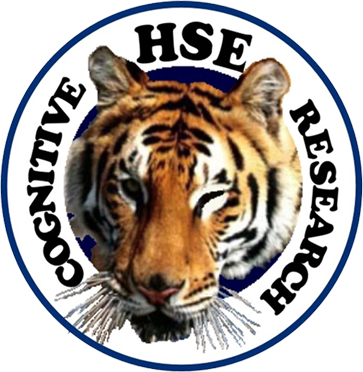A new article about binocularity in visual search is published in "Attention, Perception, and Psychophysics"
A paper "Binocularity and visual search – Revisited" by Bochao Zou, Igor Utochkin, Yie Liu, and Jeremy Wolfe is published in "Attiention, Perception, and Psychophysics"
The new paper in “Attention, Perception, and Psychophysics” authored by Zou, Utochkin, Liu, and Wolfe tells about a new study leading to substantially reconsider conclusions provided 30 nyears ago by Jeremy Wolfe and Susan Franzel in their “Binocularity and visual search” published in the same journal. Wolfe and Franzel tested two binocular vision phenomena as potential basic features that can be processed by early and parallel preattentive vision and guide the subsequent deployment of attention. The first phenomenon was "binocular luster" - perception of a shiny surface when two monocular images having different luminances are presented dichoptically (one image into one of the eys). The second phenomenon was "binocular rivalry" - perceptual alternation between one of two structurally different dichoptic images (like a vertical blac-and-white grating presented into one eye and a horizontal greeting presented into another eye).
In Wolfe in Franzel (1988), participants looked for a shiny target among matte distractors (both monocular images are light or dark) and vice versa, or a rivalrous grating among fused vertical and horizontal gratings and vice versa. The authors estimated the slope of Reaction Time (RT) x Set size functions as a measure of search efficiency (search is efficient if the slope is near 0 ms/item, and inefiicient if the slope is >~20 ms/item, with intermediate effeiciency in between, Wolfe, 1998). They also tested whether the target-distractor reversal causes the so called search asymmetry when a target A is found more efficiently among distractors B than a target B among distractors A. Search asymmetry is often considered to be an indicator that A has a specific feature that is capable of guiding attention (Treisman & Souther, 1985). Uding both slopes and search asymmetries, Wolfe and Franzel found that the luster target produces both very efficient search and search asymmetry, while binocular rivalry produces inefficient search and no asymmetries. They concluded that luster can be a feature and rivalry cannot.
Zou et al. (2017) improved the designs of Wolfe and Franzel's experiments. Specifically, they controlled additional cues provided by primary monocular features used for inducing binocular features. Presumably, luminance cues could facilitate the search in Wolfe in Franzel's luster experiments, while orientation cues in their rivalry experiments could mask rivalry. With this new control, Zou et al. found different results. They found that luster search becomes less efficient (but still reasonably efficient) and rivalry search is more efficient and causing search asymmetries. It turns out, therefore, that any binocular information can be processed preattentiovely in that or another way and used as features for guiding attention. However, as the searches for both lustrous and rivalrous targets are not super but just reasonably efficient these features seem to be only weak "guides".
To cite this paper:
Zou B., Utochkin I.S., Liu Y., Wolfe J. M. (2017). Binocularity and visual search – Revisited. Attention, Perception & Psychophysics, 79 (2), 473-483.
The paper is avaible online for free.

